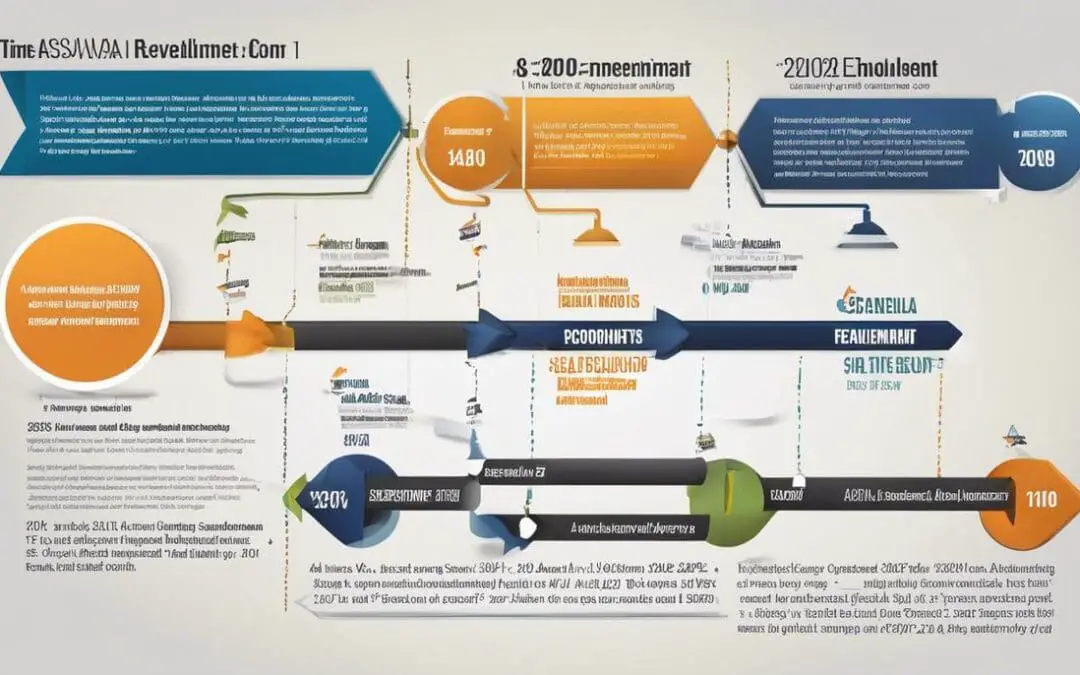The quest for service in the United States Army represents an honorable pursuit, with the Armed Services Vocational Aptitude Battery (ASVAB) functioning as a pivotal gatekeeper to this path. From its inception, the ASVAB has played a critical role in assessing the potential aptitude of aspiring servicemen and women. In this in-depth analysis, we will journey through the historical journey of the ASVAB, investigating how social, political, and military factors have influenced the changing requirements for Army enlistment. Our exploration of the present-day ASVAB score requirements offers insight into current acceptance criteria. Additionally, we will delve into the empirical correlations between these exam results and overall performance within the force. Finally, we shall confront and evaluate ongoing debates surrounding the role and implications of ASVAB scores as determinants for Army enrollment.
Historical context of ASVAB Score requirement
Title: Evolving ASVAB Score Requirements: A Historical Examination
As one delves into the thoroughfare of military recruitment in the United States, it is impossible to evade the echelon of the Armed Services Vocational Aptitude Battery (ASVAB). The ASVAB is a multiple-choice test, administered by the United States Military Entrance Processing Command, employed to identify the fundamental intellectual and vocational aptitudes of enlistment candidates. The variables influencing changes to this instrument’s score requirements, across its historic use, form an intriguing discourse.
Since the 1960s, the ASVAB has been a perennial tool, determining the eligibility of millions of military candidates. Initially, the ASVAB threshold was kept relatively low, a reflection of the exigent demands of the Vietnam War era. The Department of Defense, however, soon recognized that an effective military force required not simply sheer numbers, but a cognizant amalgam of physical and intellectual capacities.
A pivotal shift in ASVAB score requirements occurred following the cessation of conscription in 1973, when the military moved to an all-volunteer force. This encouraged an increase in ASVAB score requirements, with a relative surge in the minimum ASVAB scores accepted by each military branch. The preference for higher scores emerged from the realization that technical sophistication in warfare was escalating, necessitating a military force with advanced cognitive skills.
In the 1980s, concurrent with sweeping technological changes, the ASVAB underwent a significant transformation. As the military’s dependency on technology intensified, there was an impetus to align the ASVAB scoring with the evolving prerequisites. The enhanced ASVAB encompassed sections on General Science, Arithmetic Reasoning, Word Knowledge, Paragraph Comprehension, Mechanical Comprehension, Electronics Information, Auto and Shop Information, Mathematics Knowledge, and Assembling Objects. The score threshold consequently rescaled to accommodate the more holistic evaluation of candidates.
An intriguing aspect of ASVAB score requirement evolution was the military’s response to socio-political situations. In times of peace, the military could afford to be selective and increase their ASVAB score requirement. Conversely, in times of conflict, such as during the Afghanistan and Iraq wars, the military lowered the required scores for enlistment, reflecting the more immediate necessity for personnel.
In recent decades, the ASVAB requirement fluctuates, not solely influenced by military needs, but also with the evolving socio-educational landscape. With the rise in high school drop-out rates, a significant fall emerged in candidates meeting the set ASVAB threshold – compelling the military to periodically adjust the required score for broader inclusivity.
The alterations in ASVAB score requirements offer insight into the dynamic interplay of military, technological, and societal transformations. Each change underscores a pragmatic response to the inherent challenges and demands of ensuring a competent, vigorous, and versatile military force for the United States. This evolution is a testament to the enduring necessity of aptitude measurement in the face of changing socio-military landscapes, ensuring the Armed Services continually recruit the most qualified and suitable personnel.

Current ASVAB requirements and breakdown
Designated as the cornerstone of military enlistment eligibility, the Armed Services Vocational Aptitude Battery (ASVAB) has remained vital in the methodical selection and placement of individuals into occupations within the U.S. Army aligned with their identified skills.
Over time, the demands of warfare and technological advancements have led to gradual revisions in the minimum ASVAB score levels necessary for Army enrollment. Armed with comprehensive awareness of past developments in the understanding and incorporation of the ASVAB in U.S. Army recruitment, it becomes essential to address the contemporary compliance parameters.
Currently, an applicant’s eligibility for Army enlistment primarily comprises of two distinct ASVAB scores—the Armed Forces Qualification Test (AFQT) score and individual line scores for various Army occupations. Each of these scores is based on distinct subtests within the ASVAB, tailored to evaluate multitiered facets of an individual’s vocational aptitude.
The AFQT score, a composite of the Arithmetic Reasoning, Word Knowledge, Paragraph Comprehension, and Mathematics Knowledge subtests, positions itself as the primary determinant of enlistment eligibility. As of 2020, the U.S. Army mandates a minimum AFQT score of 31 for high school diploma graduates and 50 for individuals possessing a General Education Diploma (GED). Notably, these numbers are part of the military’s ‘Tier 1’ classification for educational achievements, implying their potential for periodic adjustments in response to fluctuating recruitment needs.
Additionally, the U.S. Army has outlined a host of Military Occupational Specialties (MOS), each with unique line score prerequisites derived from respective ASVAB subtests. For instance, a prospective Cryptologic Cyberspace Intelligence Collector/Analyst (MOS 35Q) is required to attain a minimum score of 105 in the skilled technical (ST) line, whereas aspiring tank mechanics (MOS 91A) must garner a 99 in the automotive & shop (AS) line. The wide-ranging ASVAB subtest combinations for distinct MOS line scores mirror the expansive spectrum of occupational proficiencies necessitated in the modern-day U.S. Army.
In conclusion, the threshold of ASVAB scores for Army enrollment, illustrative of the dynamic interplay between military exigencies and societal advancements, continues to uphold its role in securing a proficient force. As an instrument of strategic selection and placement, it persists in facilitating the nuanced matching of individual aptitudes with the complex mosaic of Army occupations, thereby substantiating the enduring significance of aptitude measurement in the military milieu.

Empirical correlation between ASVAB scores and performance in Army
Considering the elaborate history and relevance of the ASVAB, an intriguing question that merits examination is, what correlation exists between these scores and an individual’s subsequent performance in the Army? Beyond mere enlistment eligibility, the predictive value of ASVAB scores in assessing the potential for a recruit’s success in their chosen area of specialisation provides new insights into the test’s utility.
Research conducted on a large sample of Army personnel has demonstrated significant correlations between ASVAB test scores and measures of job performance. A foundational study by Dunnette and Hough back in 1990, found that individuals with higher ASVAB scores generally performed better in terms of occupational proficiency, training success, and supervisory ratings.
Of particular relevance, they noted that this predictive relationship held true even when controlling for variables such as level of education and prior job experience. This indicates that the ASVAB measures a broad range of abilities and characteristics that are valuable, and perhaps even necessary, for successful performance in the Army, independent of other potential capability markers.
In attempting to dissect the predictive power of ASVAB, many turn to the relevance of cognitive ability, as measured by several subtests within the examination. Cognitive ability has been hailed as the “gold standard” of predictors for job performance. The reason being its proven correlation with job training success and job performance across a broad array of occupations.
Bearing witness to this are several longitudinal studies, which demonstrate that the cognitive abilities represented in ASVAB scores predict not only initial technical training performance, but also subsequent career progression and job effectiveness in the Army.
Given the robust and universal nature of these findings, the ASVAB in essence provides recruiters with a comprehensive applicant evaluation tool, enabling them to foresee an individual’s potential for job performance and career progression. This insight ultimately assists in availing the Army of the highest calibre personnel.
While the predictive quality of the ASVAB is well-established, the focus is not solely on initial aptitude. The dynamic nature of the Army necessitates that personnel not only adapt, but thrive amidst the ever-evolving technological, educational, and operational landscapes seen on a global scale.
The ASVAB subtests’ inclusion of areas such as general science, electronic information, and mechanical comprehension, among others—creates an assessment grounded not just in conventional academia, but also in technical and practical knowledge areas that are vital in today’s generation of warfare.
In conclusion, the value of the ASVAB lays not only in its role as a military recruitment metric, but also in its ability to predict a recruit’s potential for success within the Army. The significant correlations between ASVAB scores and measures of job performance underscore the pivotal role that the ASVAB plays in bolstering the Army’s unceasing endeavour to maintain an efficient and effective force.

Photo by santoelia on Unsplash
Implications and controversies related to ASVAB scores
Considering this rich narrative, our understanding of the ASVAB is deep, yet we must also delve into the controversies and implications associated with it. The ASVAB has been an essential tool for the U.S army recruitment process. However, its use has drawn considerable debate centered around its efficiency, fairness, and potential bias.One primary controversy is the claim that ASVAB scores could perpetuate social inequality.
Critics argue that the test may be skewed towards those with a higher socio-educational background, a debate that mirrors the criticism of standardized tests across various fields. As such, it has been suggested that the ASVAB could inadvertently favour prospective recruits from more affluent communities, shaping the army’s demographic and, potentially, creating a disparity in opportunities for service and related benefits.The challenge of accommodating education level variance further fuels the controversy.
The dual-standard minimum AFQT score policy treats high school graduates and GED holders differently, setting a higher threshold for the latter. Critics argue that this policy discriminates against individuals who, for varying reasons, opted for a GED instead of a traditional high school diploma. Questions are raised on whether the ASVAB provides an accurate representation of an individual’s potential to serve, considering the diverse backgrounds of prospective enlistees.Furthermore, the issue of utility – whether the ASVAB effectively translates to the reality of military work – adds another dimension to the controversy.
Critics argue that the link between an individual’s ability to successfully complete multiple-choice examination and their military success is nebulous at best.This leads us to an ongoing debate about test predictive validity.
A number of studies have affirmed the robust correlation between ASVAB scores and job performance in Army. Yet, juxtaposingly, some raise concerns that the ASVAB might lean too heavily towards cognitive skills, potentially downplaying other crucial factors such as physical fitness, moral character or leadership potentials that significantly contribute to military success.The military’s reliance on ASVAB scores in determining the job classification for enlistees is another contentious issue.
Solidifying an individual’s path in the Army based solely on ASVAB scores might limit exploratory opportunities, ultimately curbing their potential growth and advancement within the Army.The ASVAB’s ability to adapt has proven paramount, reflecting the evolving nature of warfare and technology.
However, amidst these transformations, the controversies and critical analysis surrounding it persist. Visualizing a tool to eliminate all bias while perfectly predicting job performance in the military is utopian. Therefore, an ongoing dialogue about the fair and optimal use of the ASVAB—a tool so deeply imbued in the military recruitment process—is imperative. Whether grounding this examination more on the tenets of the current socio-educational paradigm or further diversifying the parameters which the ASVAB assesses, it is paramount that our strive towards creating a more equitable, accurate, and effective measure is relentless.
Our exploration of the ASVAB’s historical context, current requirements, correlations with military performance, and controversies affords us an extensive understanding of this pivotal determinant for Army enlistment. While the ASVAB continues to be a crucial component in guiding the recruitment process, the conversation and evaluation of its comprehensive efficacy and fairness must remain ongoing. By remaining open to improvements and continually assessing its suitability as an enlistment criterion, the Army can ensure that this test continues to serve its intended purpose of identifying potential servicemen and women aptly prepared for the demands and challenges of military service. It’s a conversation that intertwines past learnings, present dynamics, and future enhancements that may shape the face of Army recruitment and the destiny of potential recruits around the nation.

